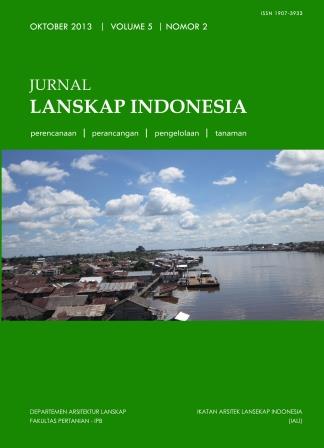ECO-AESTHETICS GREEN PANEL PADA BANGUNAN RUMAH TINGGAL
Abstract
ABSTRACTGlobal climate changing and air condition warming has affect human thermal comfort quality. In 1961-1990 period, Indonesia ambient temperature increased to ± 0.5 ºC. It was projected that the temperature increase about 1.8 to 4.0 ºC in 2000-2050. In a fact, Indonesia comfortable temperature is about 27-28 °C. That comfortable can be created by natural elements such as plants. However, the problems of urban settlement is land limitation and land economic value. Plants presence like green open space was difficult to maintain in urban area. So the solution is made plant procurement by verticultur techniques, for example green panel. Green panel has function as secondary skin (second layer) to protect building from direct solar radiation, and also create comfortable micro climate inside building.The aims of this study was created standard criteria of green panel for house building base on eco-aesthetic principles. This study used calculation of temperature decreasing to evaluate green panel effect. Scenic Beauty Estimation (SBE) and Semantic Differential (SD) was used to assess green panel visual quality. Parameters tested of this study were distance of plant placed and plant types. The best plant combination of green panels are Cuphea hyssopifolia and Iresine herbstii which were placed on 0-50 cm distance from residential buildings walls.
Keywords: green panel, eco-aesthetic, thermal comfort, house building.
Downloads
This journal permits and encourages authors to post items submitted to the journal on personal websites or institutional repositories both prior to and after publication, while providing bibliographic details that credit, if applicable, its publication in this journal. However, after the article is submitted and published in this journal, it is fully copyrighted by the Jurnal Lanskap Indonesia or JLI. If excerpts from other copyrighted works are included, the author must obtain written permission from the copyright owner and give credit to the source in the article. Then, the writer or reader is allowed to copy, share, and redistribute articles/material in any form. But it must still include the appropriate source and credit because the article in this journal is licensed by Creative Commons Attribution 4.0 International License (CC BY 4.0).
I. Proposed Policy for Journals That Offer Open Access
Authors who publish with this journal agree to the following terms:
- Authors retain copyright and grant the journal right of first publication with the work simultaneously licensed under a Creative Commons Attribution License that allows others to share the work with an acknowledgement of the work's authorship and initial publication in this journal.
- Authors are able to enter into separate, additional contractual arrangements for the non-exclusive distribution of the journal's published version of the work (e.g., post it to an institutional repository or publish it in a book), with an acknowledgement of its initial publication in this journal.
- Authors are permitted and encouraged to post their work online (e.g., in institutional repositories or on their website) prior to and during the submission process, as it can lead to productive exchanges, as well as earlier and greater citation of published work (See The Effect of Open Access).
II. Proposed Policy for Journals That Offer Delayed Open Access
Authors who publish with this journal agree to the following terms:
- Authors retain copyright and grant the journal right of first publication, with the work after publication simultaneously licensed under a Creative Commons Attribution License that allows others to share the work with an acknowledgement of the work's authorship and initial publication in this journal.
- Authors are able to enter into separate, additional contractual arrangements for the non-exclusive distribution of the journal's published version of the work (e.g., post it to an institutional repository or publish it in a book), with an acknowledgement of its initial publication in this journal.
- Authors are permitted and encouraged to post their work online (e.g., in institutional repositories or on their website) prior to and during the submission process, as it can lead to productive exchanges, as well as earlier and greater citation of published work (See The Effect of Open Access).



























